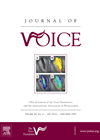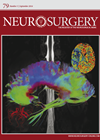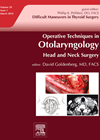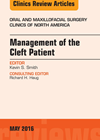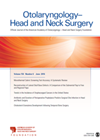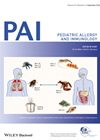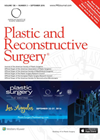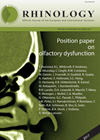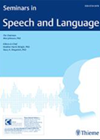
Journal Reviews archive for 2016
Alcohol consumption and the risk of developing benign laryngeal disorders?
Alcohol consumption among South Korean adults is apparently high, with over three quarters of the adult population consuming alcohol and a ‘high-risk’ drinking rate of one in five. Excessive alcohol consumption is considered to be a risk factor for developing...
Preserving hearing in NF2 patients
Neurofibromatosis type 2 (NF2) is known to result in bilateral hearing loss, even when there is no significant tumour growth. The cause is postulated to be multifactorial: stretching and compression of the cochlear nerve by the tumour, impairment of labyrinthine...
Differing types of pharyngeal pouch
This article raised an eyebrow on the grounds that apparently more than one type of pharyngeal pouch exists! They differ in terms of aetiology, site and approach to treatment, therefore awareness of them is advised to ensure the appropriate surgical...
Surgically improving pharyngeal paralysis and associated dysphagia
This was an interesting article explaining the current methods used to try and improve dysphagia and in some cases associated problematic aspiration following vagal injury. These patients are often those with other associated cranial neuropathies, with skull base lesions, brain...
Management of the ear in cleft lip and palate
The management of patients with cleft lip and palate includes a focus on effective speech and language function. Poor eustachian tube function and middle ear dysfunction mean over 90% of children suffer from otitis media with effusion. This article provides...
Cosmesis of the nose in cleft lip and palate
The cleft nose is one of the most challenging pathologies for rhinologists and facial plastic surgeons to address. The combination of architectural deformity (related to the extent of lip deformity) and scarring from previous surgery combine to cause the surgical...
Trends in the incidence of oropharyngeal cancer
The recent rise in HPV-related oropharyngeal squamous cell carcinoma is well described. There has been a significant shift from tobacco-driven to virus-driven cancers at this anatomical site. This retrospective study analysed US tumour registry data over a long period (1973–2009)...
Is the lack of sunshine the reason behind allergic rhinitis?
Deficiency in Vitamin D, an in vogue immunomodulator, has been shown in emerging data to have a substantial pathogenetic role in allergic related diseases, particularly asthma. The concept of a shared upper and lower airway has allowed the natural extrapolation...
Turbinate reduction in rhinoplasty patients
Rhinoplasty surgery is performed by both plastic and otorhinolaryngology surgeons using varying approaches and methods for both functional and cosmetic reasons. This plastic surgery article identified that inferior turbinate hypertrophy is often encountered during rhinoplasty surgery and a New York...
Olfactory ensheathing cells and their safe harvest
This interesting and unique paper not only demonstrates that biopsy of olfactory mucosa in the region of the superior turbinate is a safe procedure but also provides valuable insight into an engaging area of research by a world class team...
Managing CRS in pregnancy
An International team of experts from both sides of the Atlantic set out to perform a systematic review of the management of chronic rhinosinusitis in pregnancy. Despite a thorough search no scientific evidence was found that could form the basis...
Sharing audio data for the greater good of research
HomeBank is a novel online repository for daylong audio recordings of children and families. Daylong recordings of children in naturalistic environments with their family and friends are an important source of information to enable an understanding of how children develop...

